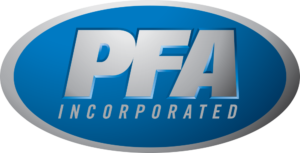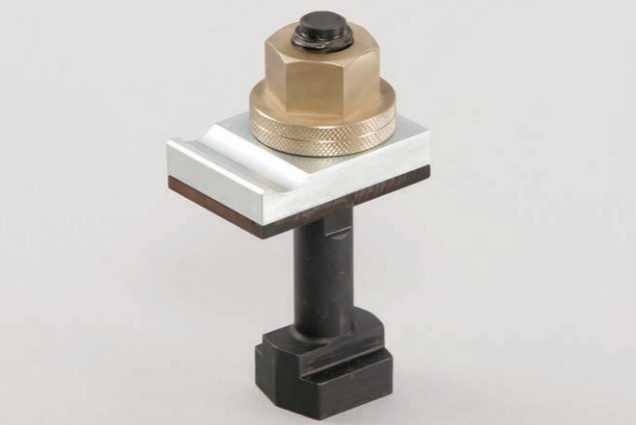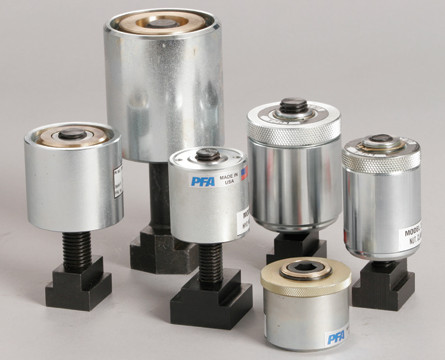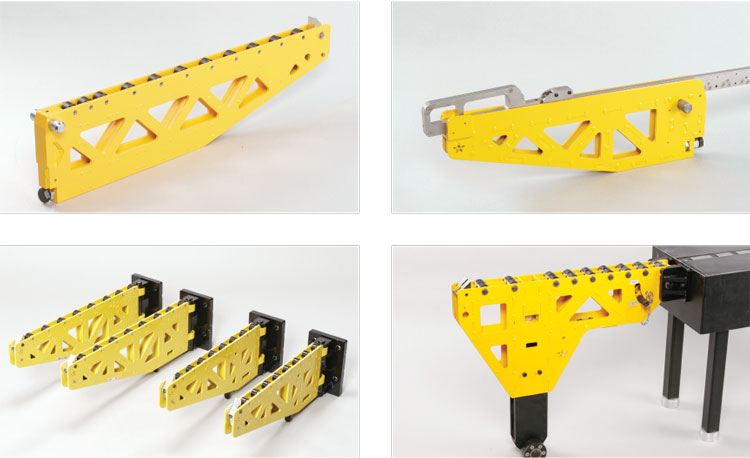
Mechanical Clamping - Lifting - Extensions
Mechanical Quick Set Clamps
WHEN TO USE 1/4 TURN QUICK SET CLAMPS:
Use mechanical quick set clamps with dies having slotted die plates and enough over slot clearance for the set clamp body. U-Slot brackets or ears may also be added to the dies or a heel block added to the back of the clamp for some applications.
HOW THEY WORK:
To use, move clamp into position and manually hand tighten nut using the large diameter knurled surface. Use a wrench to torque to the desired preload. The large bronze alloy nut acts as an easy turning, anti-galling, large surface thrust bearing arrangement for superior performance.
Model 255 clamps require approximately 125 ft.-lbs. of torque to preload the clamp to 10,000 lbs. clamping force. Model 259 clamps require approximately 350 ft.-lbs. to preload clamp to 20,000 lbs. clamping force (unlubricated threads). Clamp preload should be limited to 20,000 lbs. and 40,000 lbs. respectively.
OPTIONS AND FEATURES:
ARA vs. FRA. Free Rotation (FRA) clamps use standard threaded bolts, while Anti-Rotation (ARA) models use modified threads to prevent the clamping plate from spinning about the bolt.
TSB vs. STN. Forged T-Slot Bolts (TSB) are standard for production units. In the case where a larger than standard clamp range is desired, the stud and T-Nut option (STN) is available.
HB Option. In cases where customers desire to use the clamp in applications without slotted die plates, a heel block may be added to the clamp to support the back of the clamp. (Clamping force is 50% of rating.) For this option specify HBX.XX at the end of the part number. (X.XX = clamping plate height in inches.)
Nut Retention Option. In cases where customer desires to prevent the nut from coming off the bolt. A stop mechanism is added to the top of the bolt. Use TSL in place of TSB in the part number for this option.

Hydraulic Nut Clamps
WHEN TO USE NUT CLAMPS:
Use Nut Clamps with dies having slotted die plates and enough clearance for the Nut Clamp body (see chart). U-Slot brackets or ears may also be added to dies in some applications.
If systems are setup to have hydraulics removed during stamping, Hydra Mechanical (L style) clamps (with a mechanical lock) should be selected. If a dedicated hydraulic system is considered, the Fully Hydraulic clamps (with either multiple upper zone control or check valves) may be the preferred choice.
Clamp model and quantity should be selected to provide a total clamping force greater than the total (static and dynamic) force applied to the system during use.

HOW THEY WORK:
Nut Clamps are moved into position in a slot in the die plate (gaps between clamp and die/slot allow movement). When hydraulic pressure is applied, the clamp pulls upward on the T-bolt and the clamp body moves downward to clamp the plate. Hydraulic pressure is maintained during operation, or the Locking Nut (L style) is engaged to allow removal of clamp hydraulic pressure during stamping. To unclamp, hydraulic pressure is removed and clamps open under internal spring force. (Note: Reapplication of hydraulics is required to unlock the Locking Clamps (L) prior to releasing pressure and unclamping).
Mechanical/Portable Die Lifters/Rollers
WHEN TO USE:
Stationary Spring Loaded Die Lifter Rails. Providing multi-directional movement, these rails are used for medium to lightweight dies when die density is low. They are also used when the need for mechanical only or unique layouts drive the decision process. Springs automatically lift die when clamping is removed from the die.
Stationary Spring Loaded Ball Cartridges. Installing an array of single ball cartridges also provides multi-directional die movement without operator involvement. Cartridges can be placed anywhere in the bolster to avoid taking up slots needed for clamps. Cartridges work great in
Non-Slotted Bolster applications.
Portable Die Lifters. Hand operated lifters work well with common slots among presses, providing maximum ROI by allowing a single set of lifters to serve die changes on an entire group of presses.
HOW THEY WORK:
Spring loaded ball cartridges and spring loaded die lifter rails are permanently installed in the bolster. During clamping, the clamp force compresses the springs and forces the balls below the surface. When clamps are released, the spring forces lift the balls and the die with them. The die is now ready for removal/repositioning.
Portable die lifters provide a large mechanical advantage by multiplying hand/handle motion to lift the die. The large lever action easily lifts the die for either (1) die lifting only – insert in slot and lift the die allowing the die to be rolled onto a cart, etc. or (2) die lifting and movement onto a bolster extension, allowing die pickup with forks.

Bolster Extensions
Unlimited Options. Bolster Extensions are available in a variety of types: lift-off, swing-away, detachable, traveling and slotless. PFA can easily customize mountings to meet most applications and can even provide complete custom solutions.
Modular. By reviewing multiple press needs at one time, common QDC components can be selected. Bolster Extensions can often be used on more than one press, greatly saving on the per press cost of QDC.
Fast and Easy. Cylindrical rollers on Bolster Extensions typically reduce the force necessary to move a die to about 1 to 3 percent of die weight. Moving the die into the press becomes fast and easy. Loading and unloading dies from Bolster Extensions is also easily done by forklift or crane, making extensions essential components of many Quick Die Change (QDC) systems.
